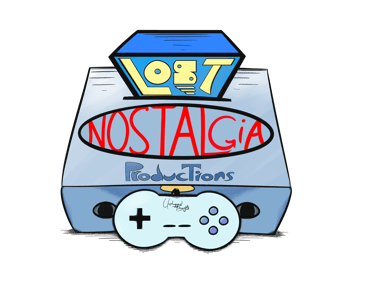
UFO 50 - Every Game Played and Graded
The Collection's First Twenty-Five Tried and Analyzed and Waiting Below...
Magic Garden – Most know the game “Snake” from the old Nokia phone preloaded freebie. But Snake’s origin goes back much farther, from 1982’s Nibbler to 1991’s obscure Snakes Alive on Apple’s old line of Macintosh computers. More modern takes include Pix the Cat, an excellent game that, although about a cat and its herd of birds, still follows that snakey premise of avoiding one’s own tail…or, in this case, trail. Magic Garden takes a similar cue, trading the snake for a girl and her troop of trailing slimes that must be collected, then laid, on specific tiles as the opportunity provides. It’s fun, clever, and colorful…and would be among the best Snake-esque games ever devised if not for the occasionally sketchy controls. A separate, updated (fixed) version of this title would be sublime.
UFO 50 is a 50-course serving of an imaginary past, a series of false memories mixed with some modern-day pretensions. It’s a history of mysteries, essentially, a nebulous collage of games representing an 8-bit age that never really existed…at least, never exactly like this. UFO 50 isn’t so much a reflection of the 8-bit era as it is a revision; more than capturing the 8-bit 1980s in all its uneven, ungainly glory, it chooses to re-edit the decade instead. Simpler games of the Pac-Man or Donkey Kong variety are deemphasized while other titles meddle with the dates, projecting a more contemporary vibe despite their antiquated aesthetics.
Indeed, a true historian of ‘80s gaming might see UFO 50 as more subversion than tribute, as being less a revealing mirror and more a distorting blur. Some of its games, like the strategy-infused Avianos or the adventure-esque Golfaria, would have been considered groundbreaking—too groundbreaking—for the era, while other games, such as the time-waster Waldorf's Journey, fits more neatly within the Macromedia Flash gaming craze of the early 2000s. In short, UFO 50 is not so much a snapshot of 1980s gaming, but more a defense of the 8-bit philosophy itself. It asks, it boasts, it hopes: What if the 8-bit style had remained gaming’s preeminent and definitive form of expression?
But more than being a schism of anachronisms, UFO 50 is a paradox of parts…of games benefiting from modern insight and design while still failing to surpass the true classics of the past. Its games might resemble the hypothetical NES or Commodore 64 title, but upon play, the flavor and texture are different…like pre-boxed donuts versus those bought right from the baker. The same recipe was followed, the same ingredients still there, but there’s less artistry behind the boxed pastry, less freshness in the cream. It’s the difference, in a sense, between a cook and a gourmet chef.
More truthfully, UFO 50’s library is what developer Mossmouth wishes the ‘80s 8-bit scene had been. Less shooters, arcade-styled games, and straightforward platformers, more quests and puzzles, more strategy and exploration. And more women, apparently…the games on hand feature far more “strong” female leads than the actual reality. In the ‘80s, boys were the foremost demographic, so naturally, games often featured men in the headlining roles. And for macho games like Contra, this especially made sense—more than a girl, storming an alien infested jungle required the granite-jawed brawn of a fearless man. It just fit the motif. But UFO 50 doesn’t agree, often squeezing women into even the most masculine and unlikely of roles.
Historical inaccuracies aside, however, this is still a monumental tableau of titles—to the point where many could have been released individually. Companies like Blaze Entertainment should license UFO 50’s games for its Evercade line of consoles, perhaps releasing cartridges of about fifteen games apiece. If not quite masterpieces, these titles are still worthy of being preserved, still deserving of their own console to call home.
And to further the point, below is the first half—the first twenty-five tries—of UFO 50’s entire canon. Mini-reviews, or rather, mini-impressions intended to give each title more upfront respectability while also documenting, for posterity, their given merit and quality. What awaits is not an exhaustive evaluation—no game was tested to its absolute fullest—but if nothing else, those considering their own trip aboard UFO 50’s retro-fitted ship will have themselves here a helpful companion.
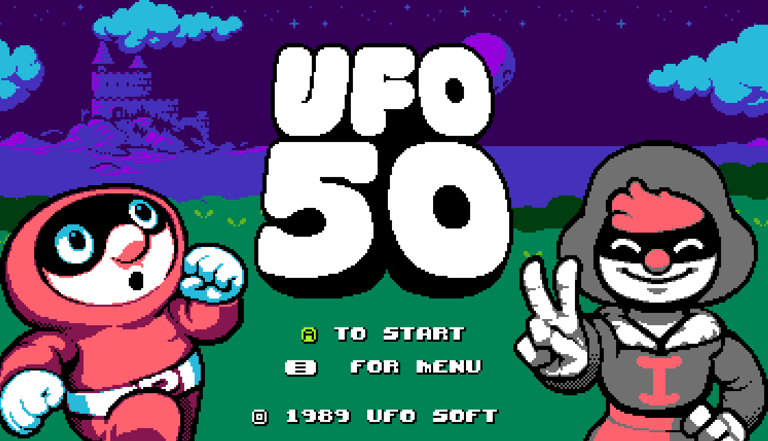

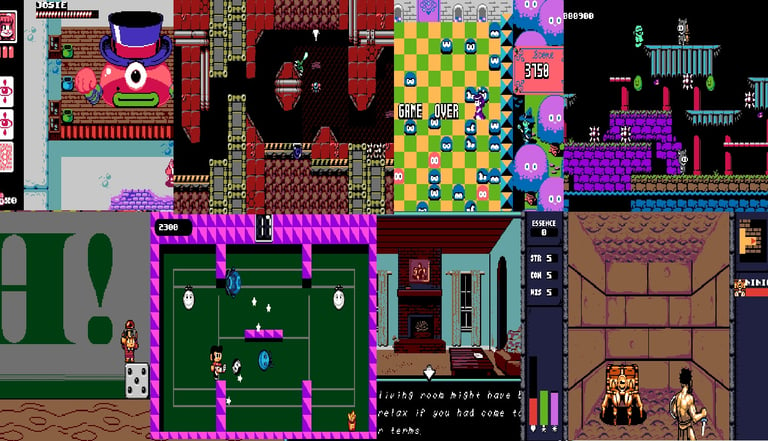

UFO 50 is, well, an iffy fifty of would-be classics. Like the libraries of real life, however, not every game is a guaranteed great. Hence, this companion guide: a quick list to assist the average passerby in distinguishing between the drek and the gem.
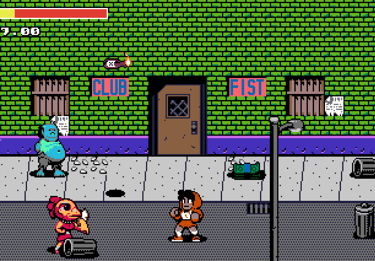

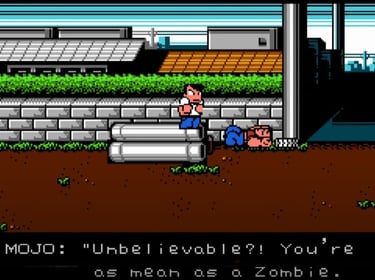

UFO 50's Fists of Hell (top) replaces River City Ransom's (second) bullies and thugs with zombies and freaks. It's not a bad idea, but it lacks the polish to truly trump the original classic.
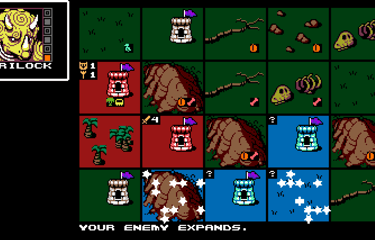

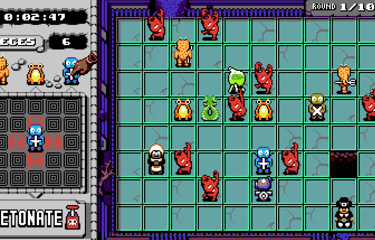

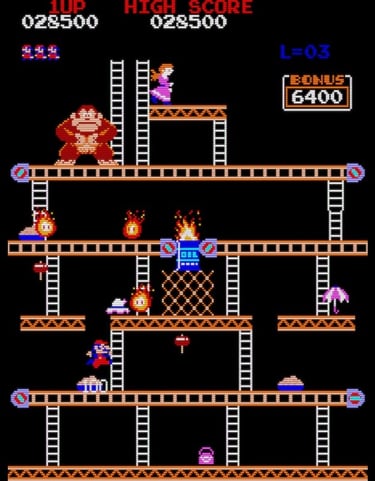

The game selection is eclectic, as seen with these strategy titles, Avianos and Devilition, top and middle respectively. On the other hand, certain genres--like the single-screen platformer and early arcade-style games (as seen here with Donkey Kong on the bottom)--receive only a cursory representation.
UFO 50: Games 1-10
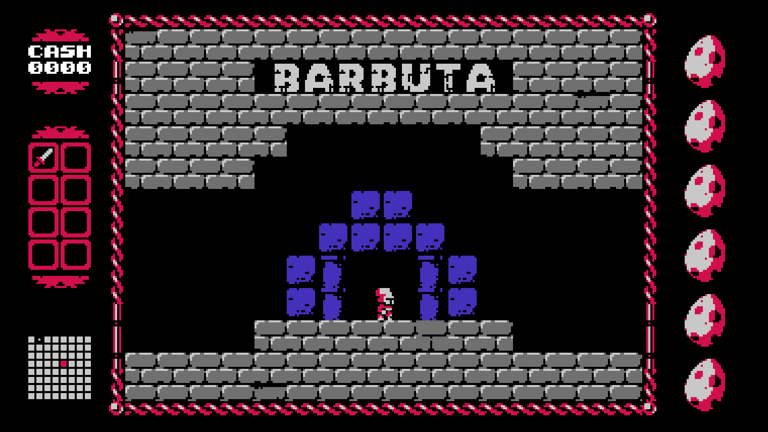

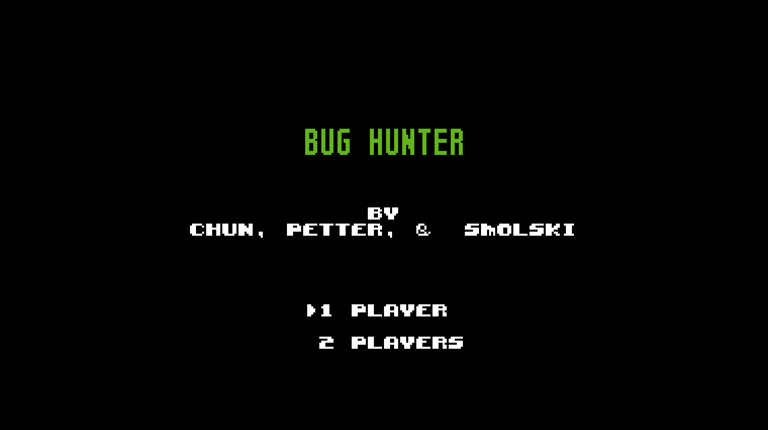

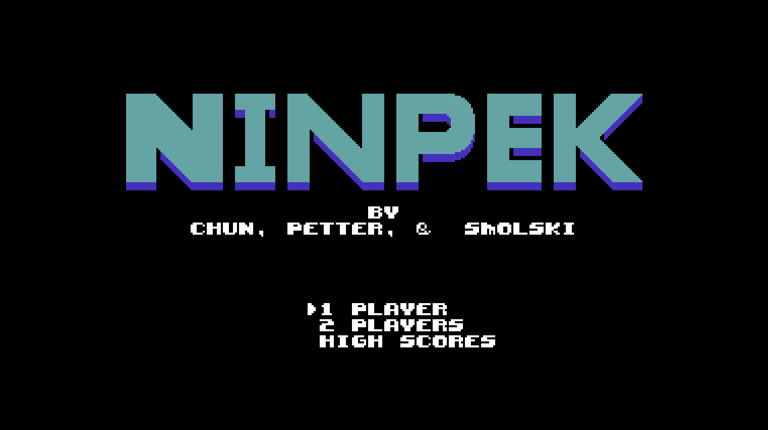

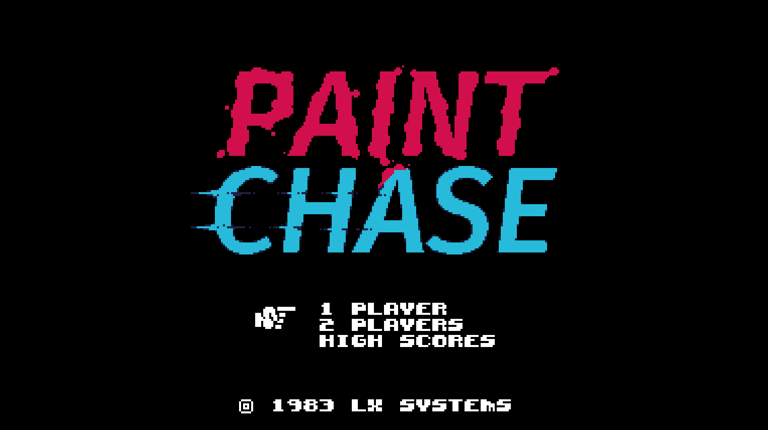

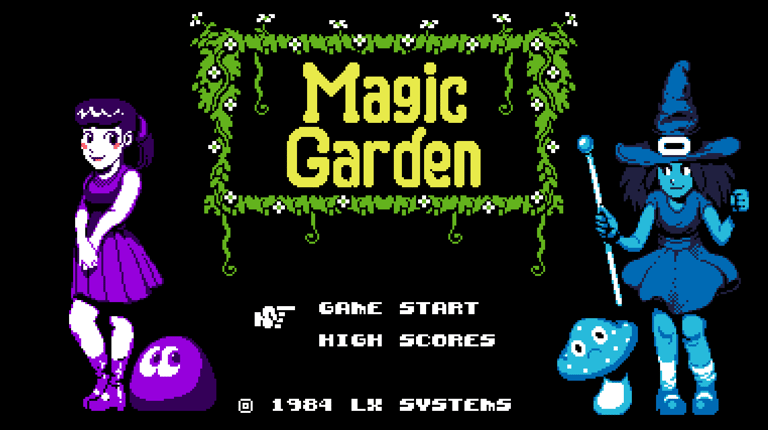

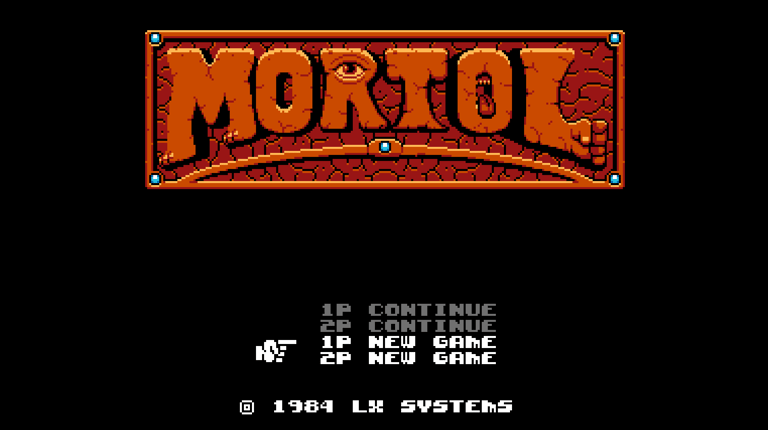

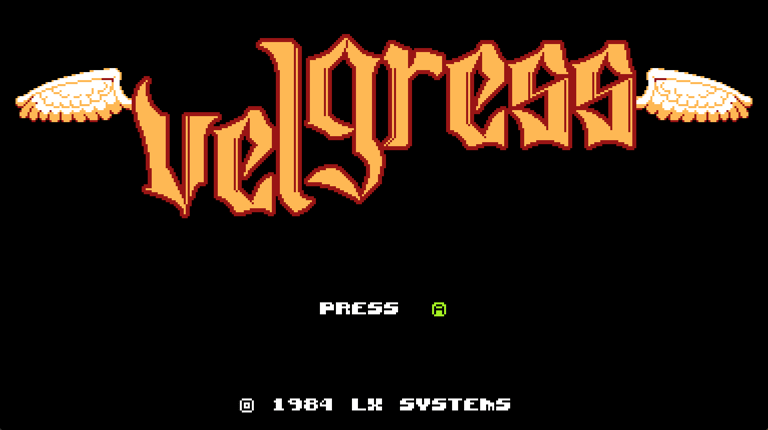

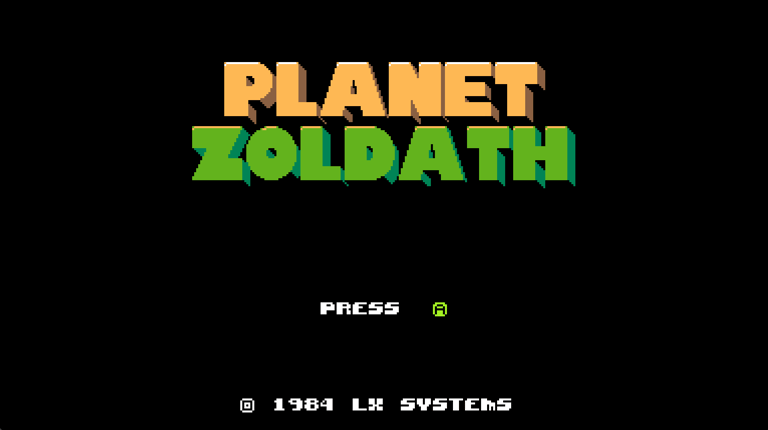

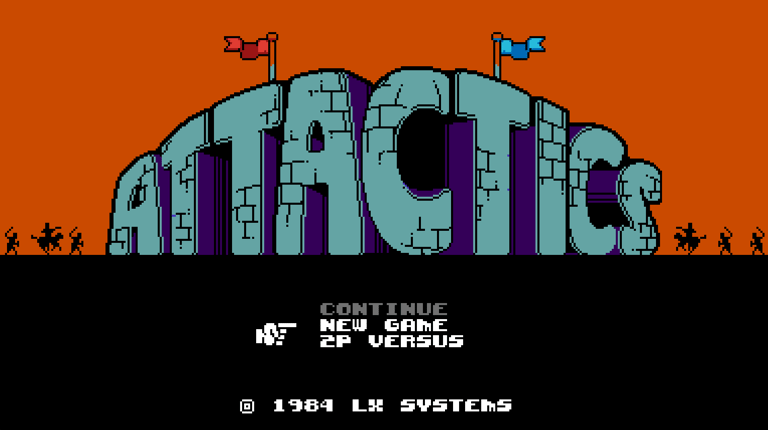

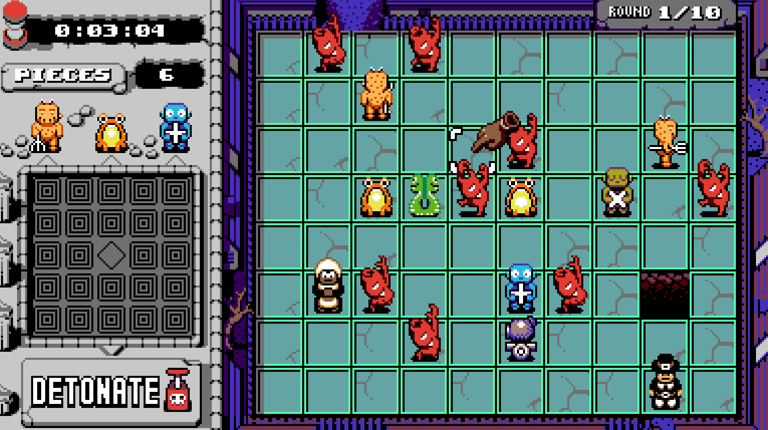

Barbuta - Slow and stodgy seems to be the primary theme of this painfully sluggish dungeon crawler. Players helm a squat knight armed with only a sword and seven measly lives. And death does come easily, with the brush of a bat wing or jumping mushroom sending the puny hero to his almost inevitable death. In short, the game takes patience and plenty of practice to master, plus a good memory in navigating a dungeon filled repeatedly with traps and (literal) dead ends. In 1983, this might have been considered "good," but most modern players, fair or not, will see this as a mediocre Metroidvania at best.
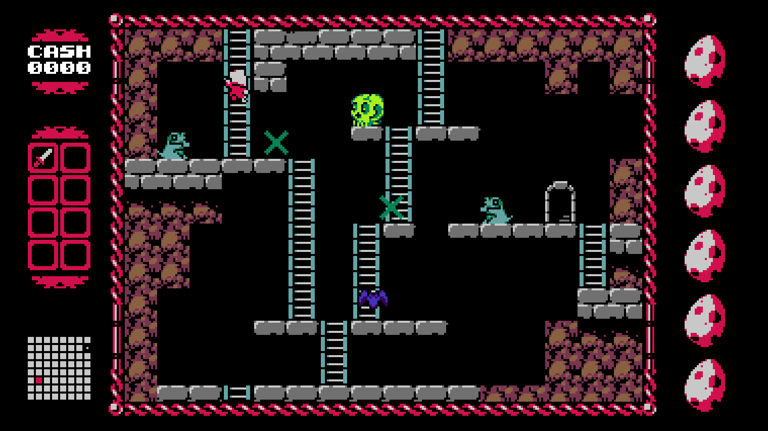

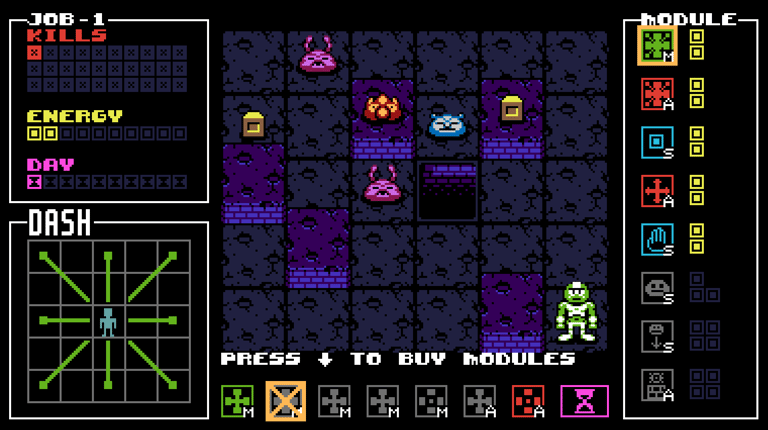

Ninpek – An auto-scrolling platformer featuring a hop-happy ninja beset by a land of Yokai, Tsukumogami, and…bipedal pigs. It’s actually pretty fun, resembling Capcom’s SonSon and SNK’s Psycho Soldier in terms of gameplay; it’s also much shorter than its apparent inspirations, having to rely on a “second quest” of sorts to feel more like a complete game. In this sense, Ninpek barely overcomes the trappings of “minigame,” offering just enough length and variety to justify its inclusion within the greater fifty. But, for while it lasts, players are in for some harried, double-jumping fun as they fling shurikens and weave their ninja through the ever-approaching and encroaching valley of dangers. Just beware, platforms will continue to “slide” underneath the little ninja as the screen scrolls to the left. It’s a counterintuitive quirk that players will have to quickly learn lest they prefer death.
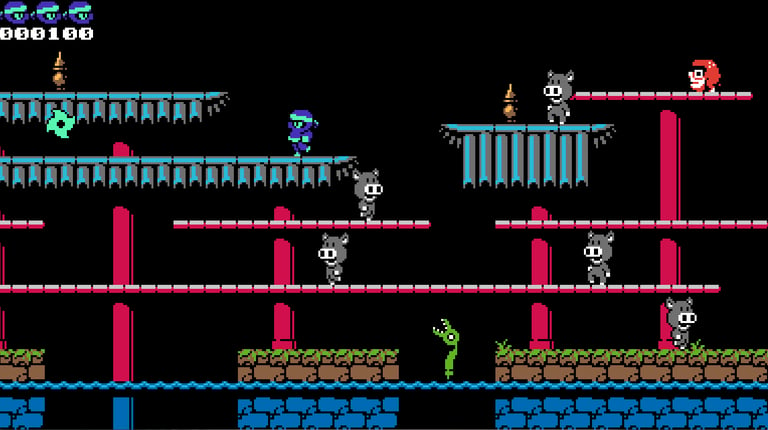

Bug Hunter - An interesting turn-based affair that sees a hired "Bug Hunter" attempting to clear a mining quarry from a host of hostile alien bugs. It's a tricky affair that sees players having to carefully choose between attack and movement options while navigating an increasingly insect-infested grid. Take too long and the bugs overrun, forcing a head-hanging retry. The game will likely prove too esoteric (and difficult) for some, but overall, it's a well-conceived, commendable experience.
Blue Title - Worthy
Yellow Title - Worth Exploring
Red Title - Unworthy
Orange Title - Worth Ignoring
Grading Key:
Paint Chase – The "maze game" was a popular genre in the early '80s; arcades and home consoles alike were desperate for a hit mimicking the already iconic Pac-Man. Paint Chase is UFO 50's main attempt in channeling that maze-craze mentality, channeling not only Pac-Man, but both Rally X and Crush Roller/Make Trax. The premise, as expected, is as simple as painting a picture blue--players must wind their little race car around a variety of mazes, turning the causeways a certain color while enemy vehicles scuttle around trying to reverse the work. If a prescribed threshold isn't reached before the time limit expires, a life is lost and a redo enforced. It's mildly fun, but lacks the personality that made the best maze games, from Mr. Do! to Ms. Pac-Man, so infectiously fun, with gameplay and a limited presentation that doesn't benefit from the repetition.
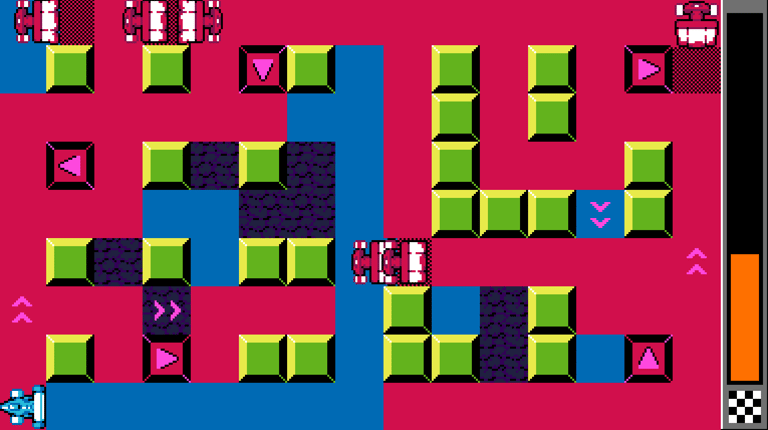

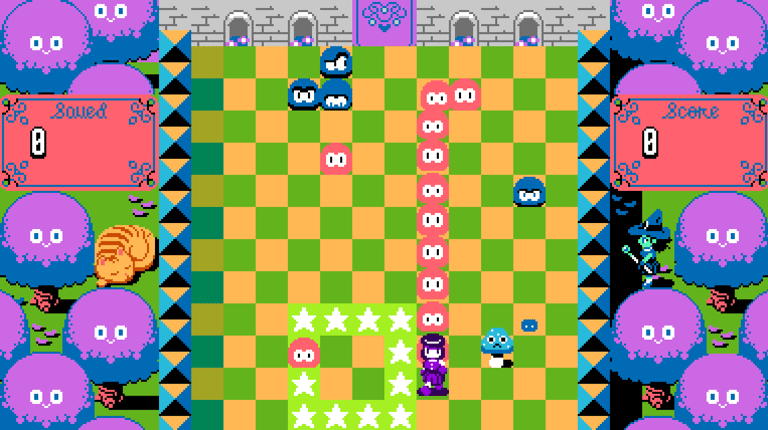

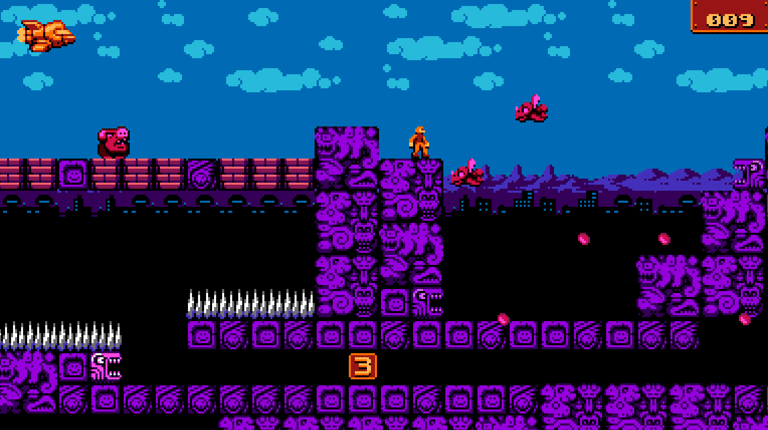

Mortol – "Mortol" is, perhaps, a spin on the word "mortal," as the game's theme, if anything, is self-sacrifice. Die to survive, as some might decide. Indeed, to progress through Mortol's long and difficult side-scrolling stages, players will have to strategically sacrifice men for progression's sake. A boulder is blocking the way forward? Blow up a guy so the next one can advance further. Bed of spikes obstructing the path? Smash them by turning a man into stone, converting his now lifeless form into a literal stepping stone for others to use. It's essentially Lemmings, but with the player taking full control of each little denizen, one at a time. And while it lacks its source inspiration's charm, for those who have the will and patience, this is a commendable take on what was once a popular genre.
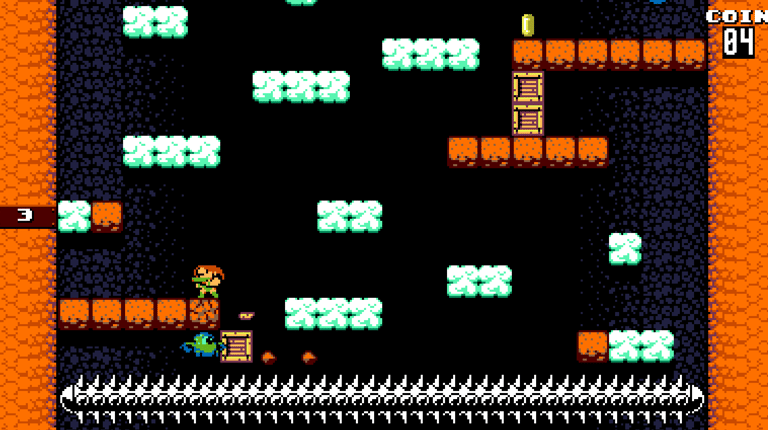

Velgress – Anyone who's played Downwell (whose creator also contributed to this collection) will see Velgress as its inverted sister. While the former saw a little man falling and blasting in a fit to survive, this version sees its female hero blasting upward as a spiked grinder follows below. Go too slow, in other words, and the battle maiden is seriously dead. This is one of those games that could have been 100% more fun if the difficulty had been softened...drastically softened. But, as is, this is a brutal journey to heaven, a Sisyphean slog of death and repetition. Players only get one life, the game already begins unapologetically tough, and one mistake means a return to the very beginning. Even by arcade standards, Velgress would have been considered too taxing, lacking the usual "breaking-in" stage to at least introduce players to its intricacies and nuances. Needs a serious rebalancing.
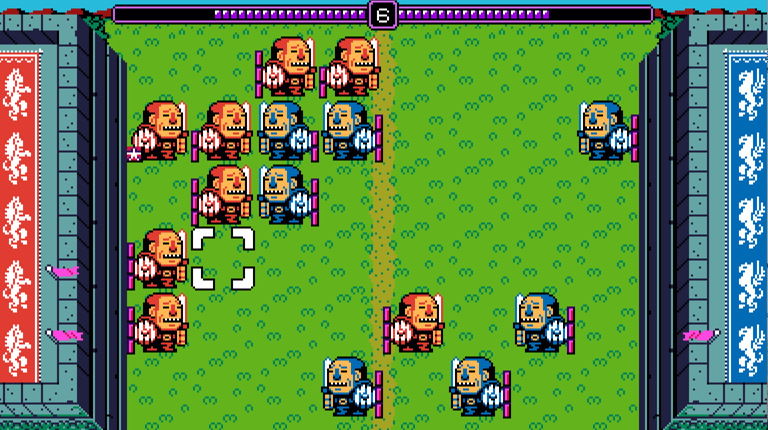

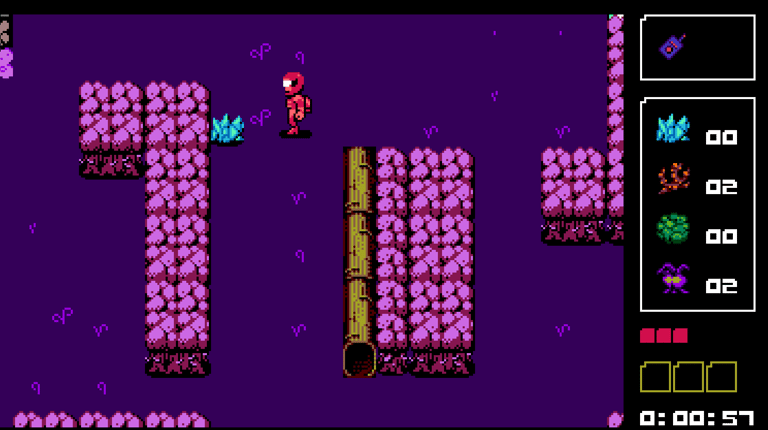

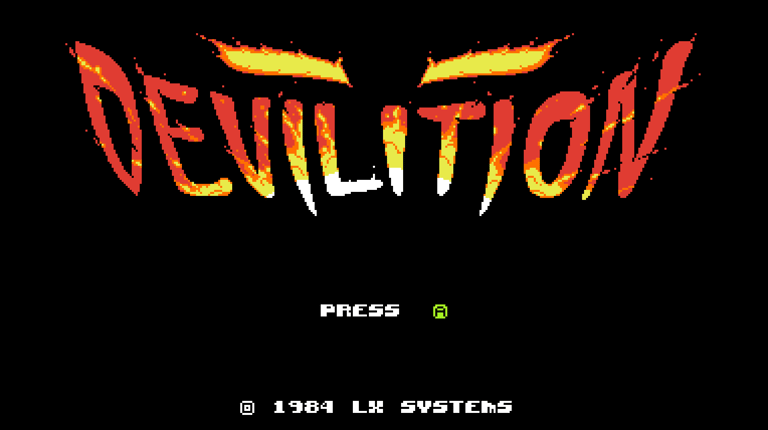

Planet Zoldath – UFO 50 has a surprisingly limited supply of overhead, Zelda-esque adventures. Planet Zoldath is the seeming attempt to fill this void, offering a quirky quest in which a space traveler must wander a strange planet, fighting aliens and collecting resources. It plays okay...with a few of the items (like the boomerang) feeling much akin to their Zelda inspirations. But the overworld is both boring and unforgiving, with items just lying around in weird, inexplicable locations, and enemies more bothersome than fun to fight. Death brings a complete reset, making the game feel more like a rogue-like than anything Nintendo would dare produce. Those who persevere may find something redeeming, but everyone else should probably steer clear.
Attactics – Yet another strategy game, but one owing to a more arcadey sensibility. In realtime, players must shift their troops up and down on their half of the playfield to best counter the enemy barbarians approaching from the right. The goal, in short, is to breach the invading team's base before it can do the same. A player may, for instance, align an archer with a distant sword fighter, which is likely smarter than having the two fight face-to-face (in which sword beats arrow every time). In many ways, the game feels like a simplified tower defense title without the variety; the game mostly plays itself, leaving players with little to do beyond sliding soldiers like action figures across a plastic set. Okay, but forgettable.
Devilition – A puzzler about detonation and chain reaction; players must place explosive monsters around a grid in the hopes of destroying all the loitering demons in the process. Like many of UFO 50's games, the proceedings here are strange and initially esoteric. But after a few tries, players can have a satisfying time placing creatures to induce the perfect swath of destruction. The title's main shortcoming comes in the monsters' respective explosive reach; once a creature is laid, players are curiously unable to go back and review its detonation range, leading to mistakes that could (should) have been avoided. But for those with good memories or graph paper on hand, Devilition is a devious brain teaser.
11-25
Block Koala – In the vein of classic block puzzlers like Boxxle, Block Koala has its furry protagonist pushing blocks and pressing tiles to ultimately—apparently—redirect the waterflow back to a dying, dried up park. The story, as is the case for games like these, makes little sense…but the game itself is a fine, if bland, block puzzler that get’s increasingly taxing as the levels progress. Fortunately, the game utilizes a handy undo option that erases the previous moves (mistakes) a player has made. This, along with the automatic save feature, ensures that anyone, with enough time and patience, will be able to see the game through to the end.
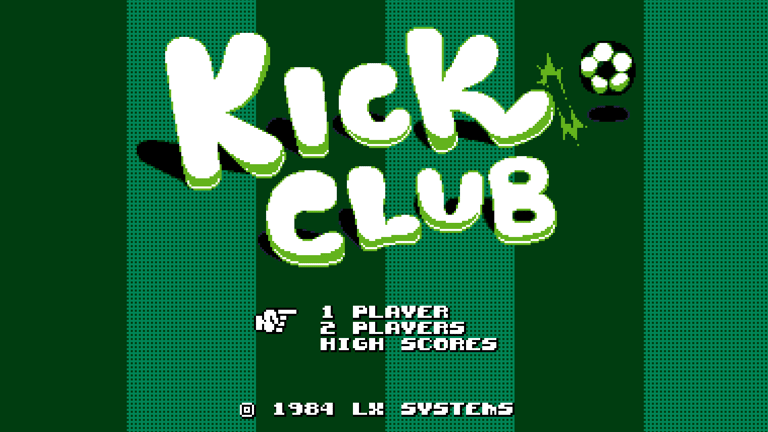

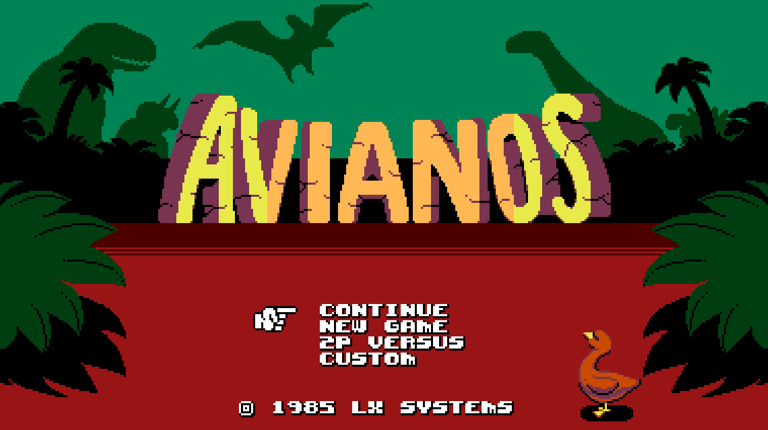

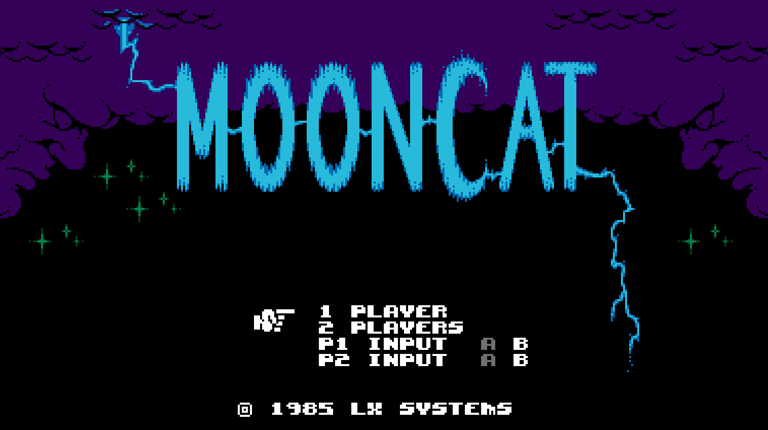

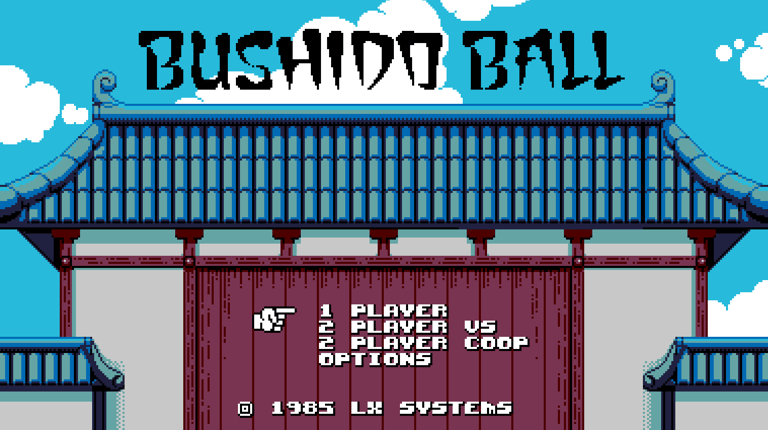

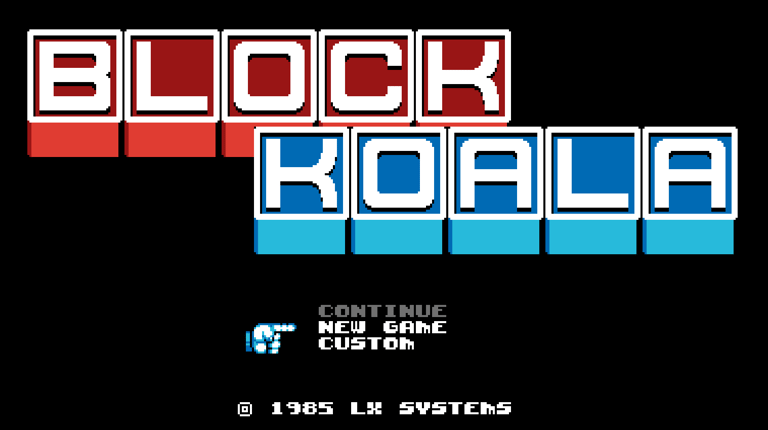

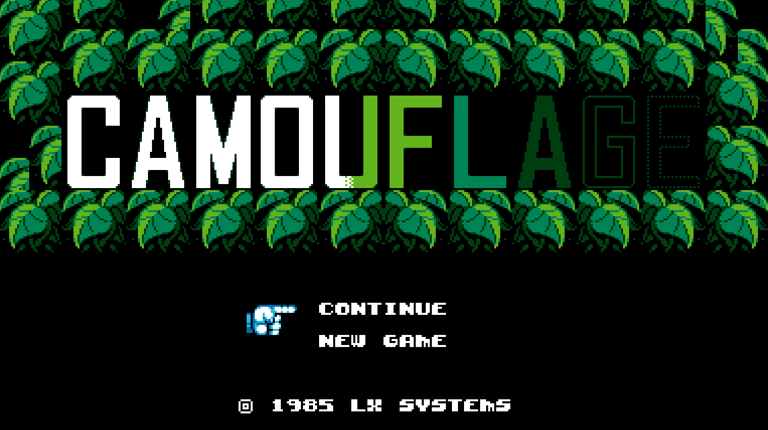

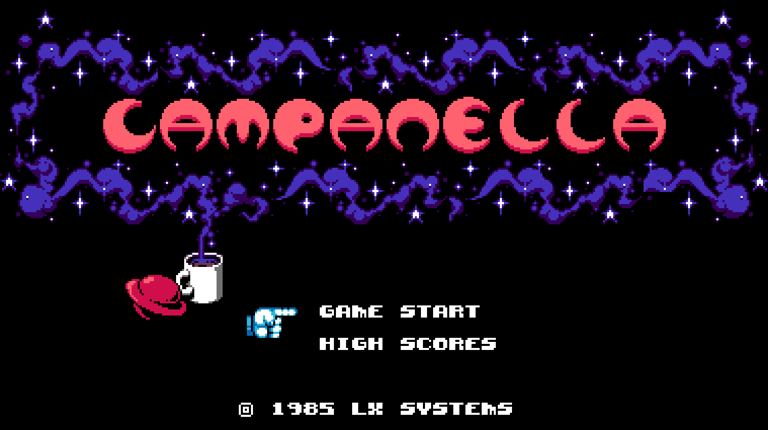

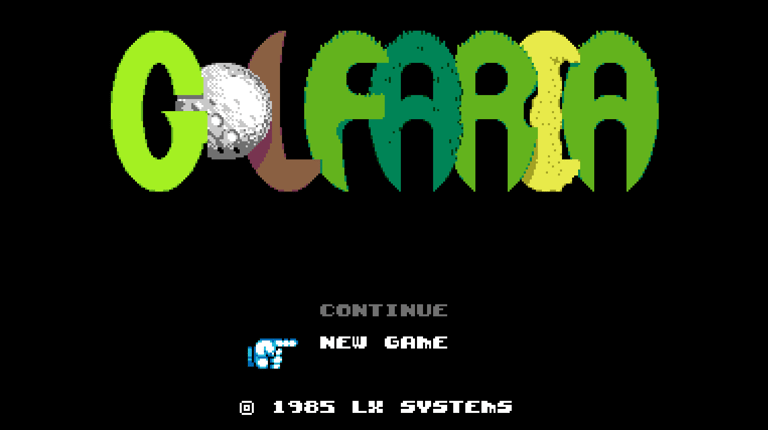

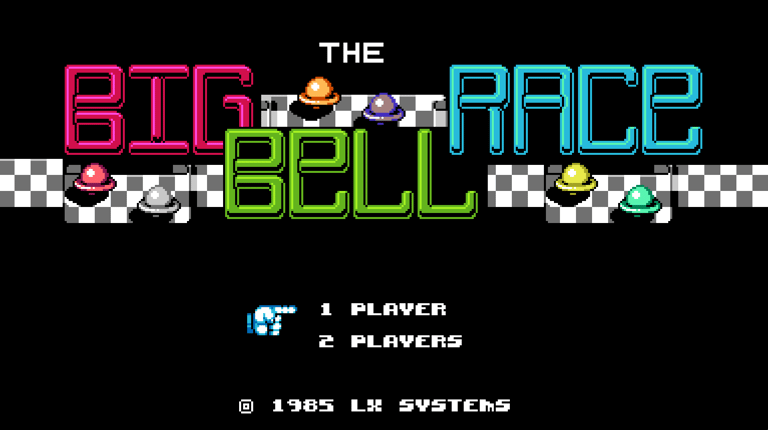

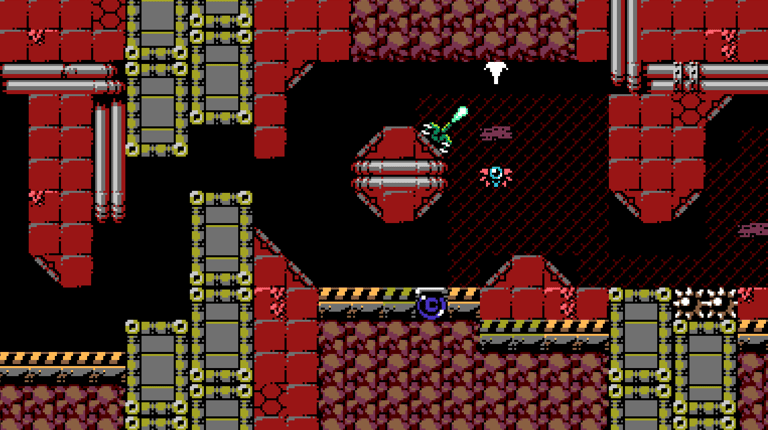

Kick Club - As the collection’s only single-screen platformer, Kick Club provides a decent spin on the genre’s typical “clear the screen” gameplay. Here, the game’s gimmick is a soccer ball that must be kicked at each stage’s roster of sports-themed monsters. But this comes with a devious twist—players start each stage defenseless, having to first retrieve the ball before it can be used. In the later levels, this can prove to be a dastardly challenge, forcing some deft platforming and timing in-between rampaging baddies just for the ability—the privilege—to fight back. And once kicked, the ball must always be recaptured, forcing some serious dexterity on the player…and all within a rather unforgiving time limit. With no continues, some iffy hit detection, and boasting only forty stages (with a lackluster final boss encounter), Kick Club lacks the variety and personality of its Snow Bros. and Rod-Land peers. Indeed, it barely qualifies as a full game. But, for what it is, it’s still pretty fun; the prototype of a would-be classic.
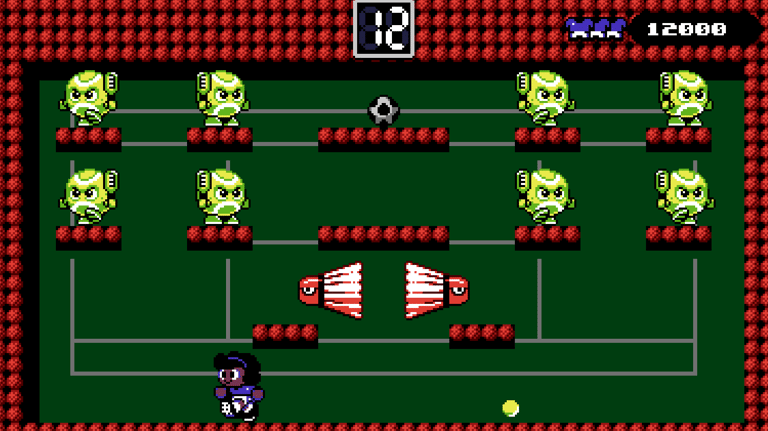

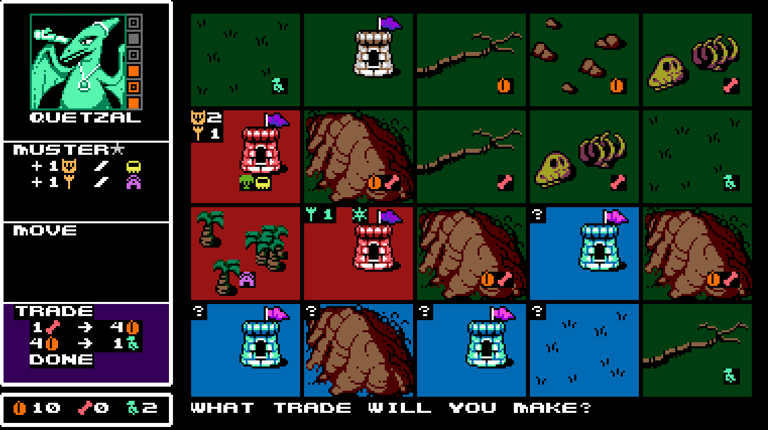

Mooncat – Some games are challenging due to their smart construction and design, and some games are challenging due to inane contrivances and artificial handicaps. Nintendo’s Ice Climber, for instance, owes most of its difficulty to an awkward jumping mechanic that’s as much a liability as a lifeline to the player. Mooncat is even worse, forcing players to control a weird fungi-like thing—not with the usual d-pad for multi-directional movement and a button for jumping—but by using the d-pad to move the creature one direction (right) and the opposing face buttons for the other (left). Adding to the injury, jumping is done by hammering the d-pad and button inputs at the same time. Sound confusing? It is; the game is the very antithesis to accessibility, and worse, there’s nothing redeeming about the overall experience to justify—or at least qualify—the design's inanity. It’s a shame, as the aesthetics and surrounding world are interesting. But interesting enough to cope with the intentionally sadistic controls? Nope. Above all else, it just isn’t fun.
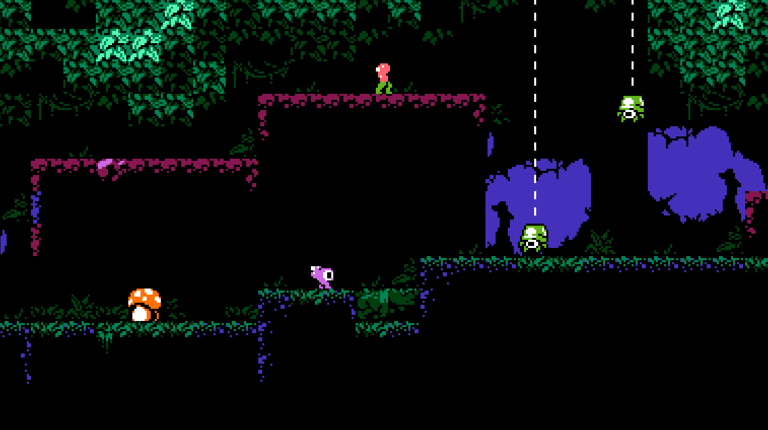

Avianos - Easily one of UFO 50’s highlights, Avianos is a turn-based strategy sim featuring intelligent dinos and prehistoric gods. It’s a surprisingly complex experience all executed with classic finesse—players will only have to manage two buttons (plus a d-pad) to maneuver their units, pray to their chosen deities, build new fortresses, and naturally, attack the opposition. The game could benefit from some included instruction, as the proceedings are a bit esoteric for new players. But with three levels of difficulty, a two-player mode, and a convenient saving system, this is one of UFO 50’s most fully-featured, inspired darlings. It’s not for everyone, but for war and strategy buffs seeking something a little different, a bit weirder than the norm…Avianos does indeed feel like the lost digital treasure of a faded age.
Bushido Ball – An interesting game that feels somewhat lifted from Technos’ Super Dodgeball or, a bit later, Windjammers, in which two contestants must fling, bat, or smack a projectile into their rival’s opposing goal. Okay, so it’s really Pong, but redone in an 8-bit, feudal skin that sees dueling warriors using blades, ninjitsu, and special moves to overpower, fool, and ultimately, rule over their competition. Players can choose from six different contestants/fighters, granting the game a one-on-one fighting quality—a contrarian alternative to Street Fighter or the old freeware classic Pong Kombat. It’s good, but…in truth, would really benefit from some added style and more sophisticated mechanics. A 16-bit sequel, in other words.
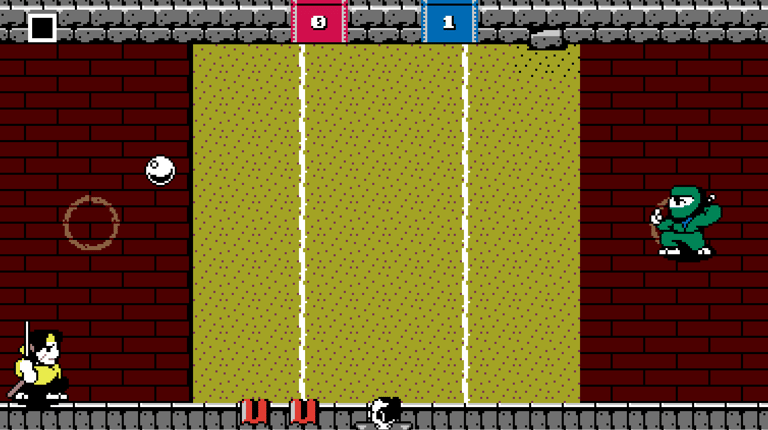

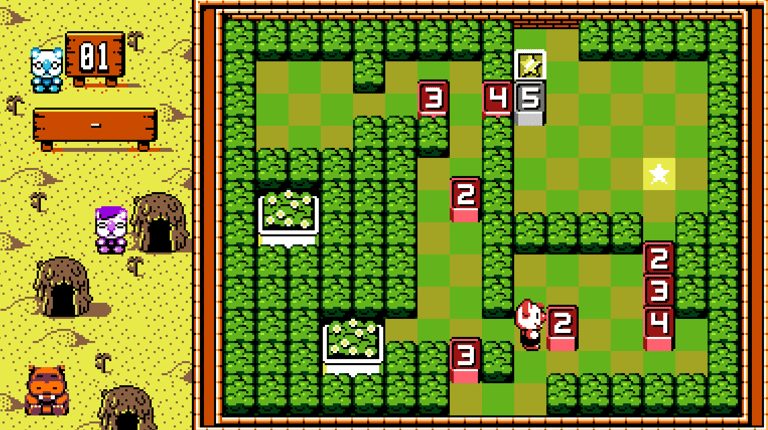

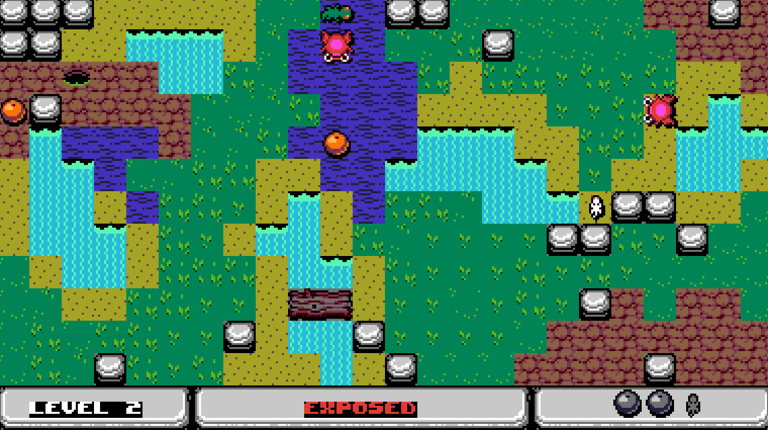

Camouflage - A puzzler in the skin of a stealth game, Camouflage sees its green hero skirting death by using its God-given gift of changing its skin tones with the scenery. Players can meld the little lizard with any patch of the terrain, making it invisible to the always watching predators perched across the map. To avoid being seen and thus gobbled, players must carefully analyze each section of the landscape, looking for that one tile that will allow the chameleon to not only go unseen before a would-be connoisseur, but also go unnoticed by the next foe likely watching nearby from a different angle. It’s an effective, clever idea, but one that also grows repetitive upon extended play. This feels better suited to a mobile app that can be played easily in short bursts; otherwise, Camouflage becomes a bit of a slog.
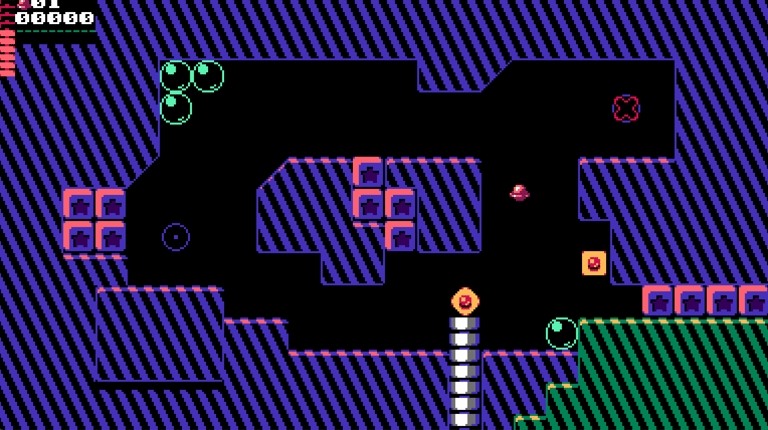

Campanella – The indie scene is full of Lunar Lander/Gravity Crash-style games in which a little ship or pod must “thrust” its way through caverns of hazards. Movement is conducted via a thruster that can propel the craft forward or, if relaxed, allows the module to thereby descend. It’s a fun if clumsy mechanic that Campanella employs in full force, forcing players to hurl their little UFO through increasingly hostile cavernous stages. Or, rather, carnivals of stages…as the ship wends its way through circus and ghostly-themed hollows of quirk and abuse. Campanella isn’t an easy game, but it’s genuinely fun; had the difficulty been softened with, at the very least, a continue system (and maybe a gun versus a sword), this would be one of UFO 50’s top picks of the collection. As is, it’s still worth playing.
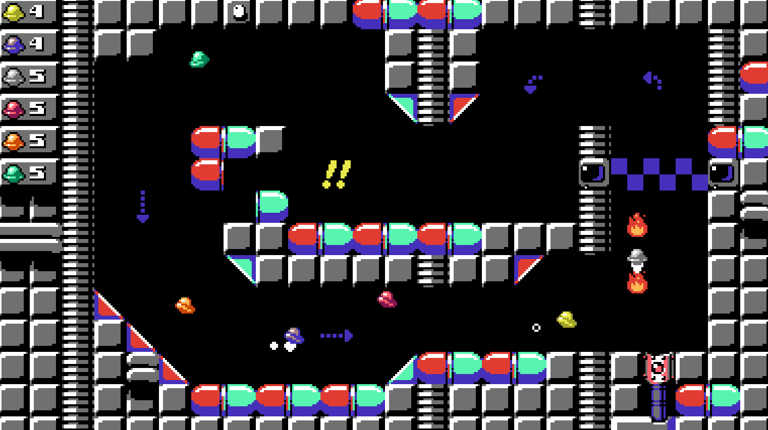

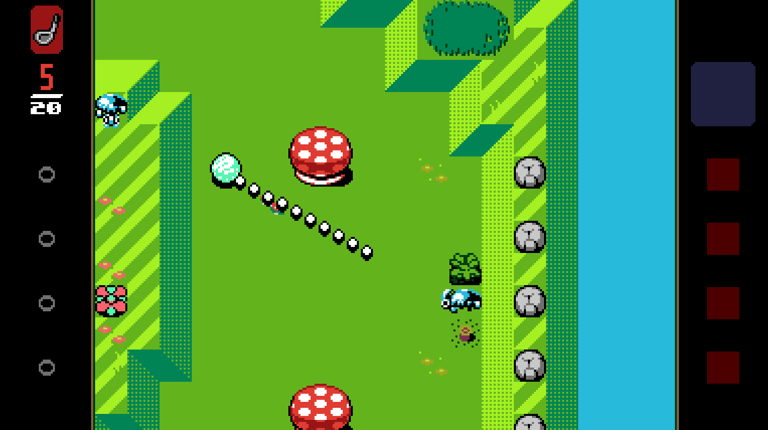

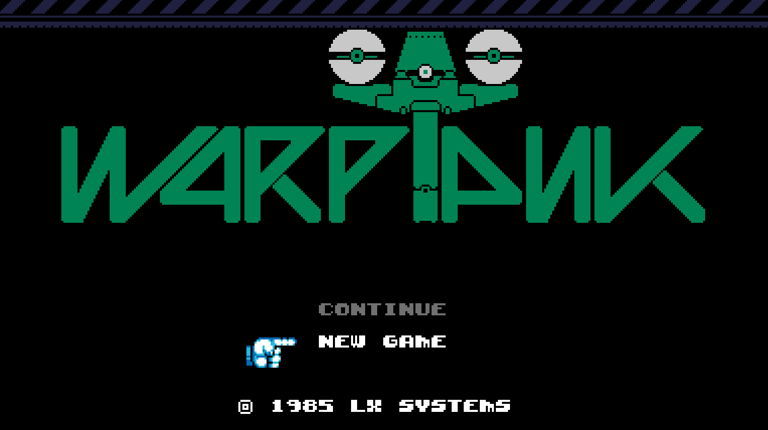

Golfaria – Here’s a game that screams for critical acclaim, a game that should be, by any superficial measure, a fan favorite through its sheer whimsy and cheeky sensibilities. And yet, despite a promising foundation, Golfaria is one of the collection’s most dismal disappointments. Essentially an adventure game mixed with the mechanics of golf, players must propel a sentient golf ball through a world of traps and baddies and personified golf equipment. It’s almost genius, like a surreal take on 2017’s Golf Story mixed with some old-school Zelda. But the execution and scope is all wrong, the game a cryptic blend of awkward handling, bizarre physics, and a meager 20-stroke count that banishes new players back to the beginning once they’ve swung their final blunder. Golfaria is more an exercise in trial-and-error—a weird what-if existence where the goal is finding the hole more than actually getting there. And for most, this means suffering the title's many fussy idiosyncrasies. More than any game here, this is the one that could benefit most from a certain retooling. The base game is good, but comes layered with a physics engine and a convoluted overworld that doesn’t respect the player’s time.
The Big Bell Race – An incidental little racing game clearly based on the Campanella engine. Anyone familiar with top-down racers like Atari’s Super Sprint will get the basic gist—outrace a slew of dangerous rivals through a series of curvy, swervy tracks. The difference is that, rather than drifting on wheels, racers pilot wobbly spaceships using Campanella’s inertia-heavy physics. Powerups can also be grabbed, granting the game a slight R.C. Pro-Am/Mario Kart feel as the competing ships crowd and crash and clump together. It’s all competently done, but the aforementioned key word is “incidental.” Bell Race is a fun distraction without being anything particularly meaningful, clever, or captivating. The simultaneous two-player mode might provide more engagement but, in truth, who’s really going to do that?
Warp Tank – One of the cleverer entries in the collection, Warp Tank is a puzzle/shooter mixture in which players must maneuver the eponymous vehicle through the various branches of a militaristic compound. Enemies and traps are everywhere, but by virtue of its titular ability, the tank can “warp” from one parallel surface to another, circumventing hazards that would otherwise be impassable. As the levels grow more complex, progression becomes more a process of deduction and timing as players study the available surfaces for the proper “route” through. The game is almost a platformer in some sense…just without the jumping. Indeed, Warp Tank is one of the collection’s rare titles that feels like it could have been a genuine sleeper hit back in the 8-bit days—just as the NES’ Metal Storm is now. Its one ding comes in the somewhat choppy scrolling of its graphics, but the game easily transcends this minor blemish. Recommended.
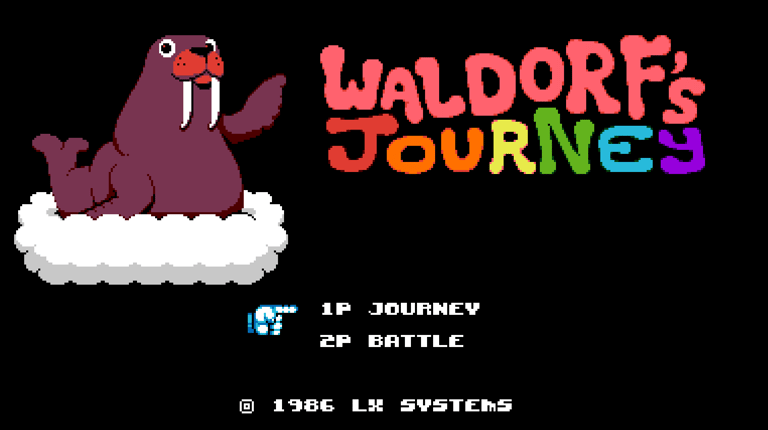

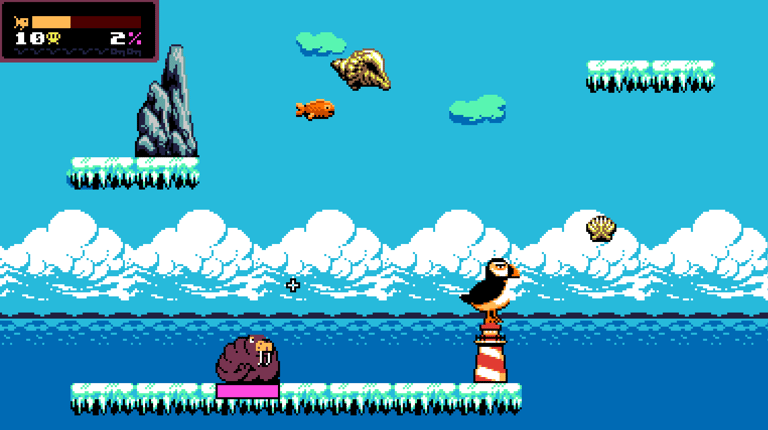

Waldorf's Journey – Flash-games were once all the rage, and one particularly infamous variant was the “whack the cat” challenge in which some poor furry or another unfortunate is driven, like a golf ball, into a veritable minefield of obstacles. Gameplay and skill were virtually nonexistent—the idea was to simply launch and then watch as the critter got ping-ponged through a surreal playfield of springs, spikes, explosions, and slings…hoping, by pure chance, to break the “distance record” (whatever that was). Waldorf’s Journey takes the basic concept and turns it into an adventure of sorts, allowing players to equip their Walrus avatar with items and upgrades to have a better hope of surviving an otherwise hostile, unforgiving world. It’s mostly an exercise of trial-and-error mixed with caution and some smart nudges of the power meter, and ultimately, it’s mostly too fussy to be fun. Had the games taken a more zoomed-out approach, making visibility easier and more seamless, this may have worked. But as is…it’s a beta game still needing another revision.
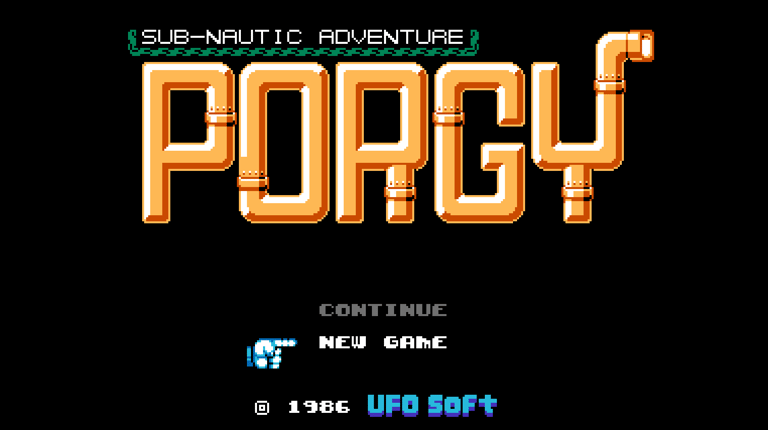

Sub-nautical Adventure Porgy – Another of UFO 50’s many Metroidvania-esque adventure-style games, this one is set in the depths of a dangerous sea, or rather, a lethal coral reef hiding plenty of treasures and some mighty dangers. Giant sharks, octopi, and plenty of smaller critters litter the caverns, blocking the little submarine from its mission of search and pillage. Porgy is the strange game in that, although not without charm, lacks a certain gimmick or hook to keep players interested. It’s a bit like Ecco the Dolphin in that, although the adventuring element does offer a certain allure, it alone might not be enough. A little sub firing tiny, hard-to-aim torpedoes at sea anemones and other aquatic life doesn't exactly lead to mainstream appeal. Porgy is a game people might play, one day, but rarely first.
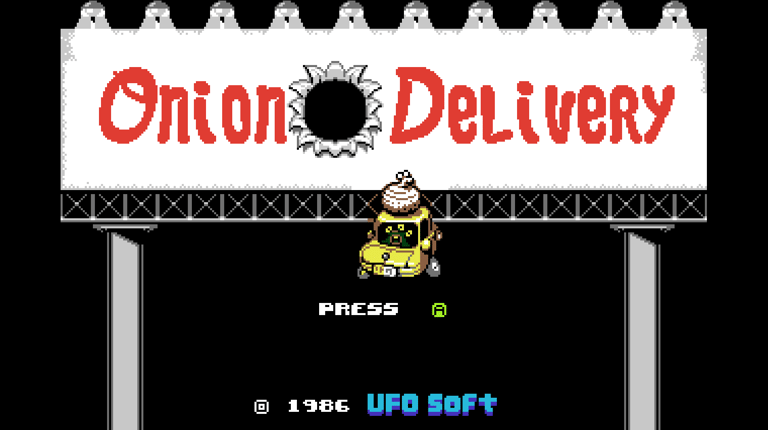

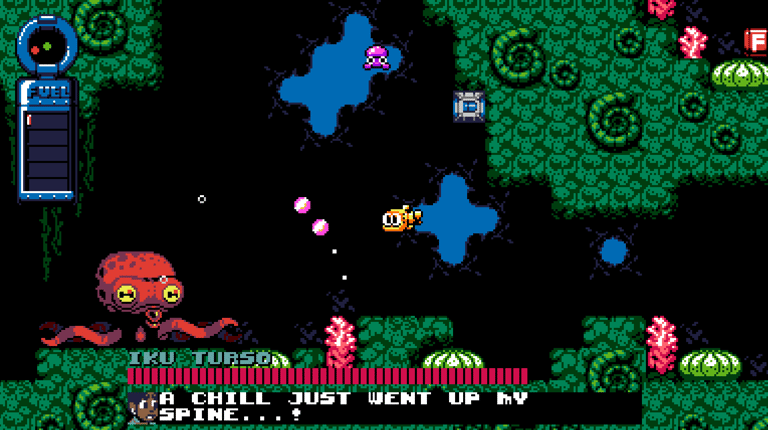

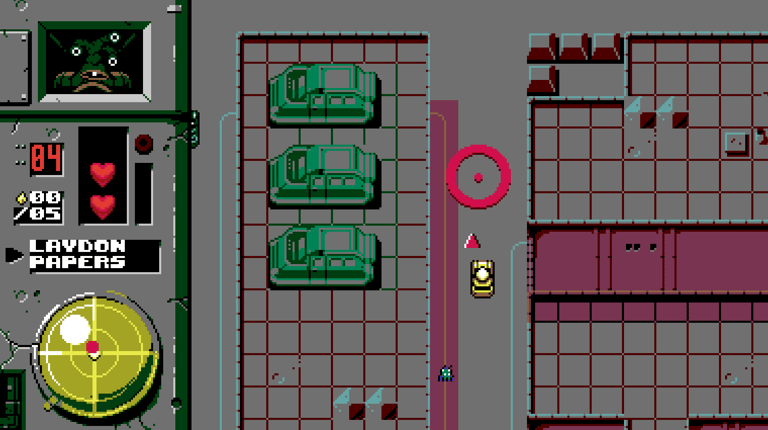

Onion Delivery – Here’s a perfect example of a promising experience being sabotaged by some sloppy execution. And this time, that sloppiness is the controls, placing players in command of a squirrely delivery car that almost can’t help but crash into other vehicles, buildings, hazards—pretty much anything that isn’t the intended destination. One wonders, if given more time, the game could have been repurposed as a slower-paced but more dynamic action-adventure game a la Retro City Rampage or GTA: Chinatown Wars. But, as is, the game is only the raw potential of something better, the beta of a game begging to be redrafted into something actually fun. Players will no doubt be impressed for about ten seconds, then explode due to the unwieldy speed and awkward controls of the protagonist’s spastic car. And after going through a few more rounds of such circular dead ends, they’ll quit…not because the game is bad, but because it’s bad in the wrong, most crucial areas.
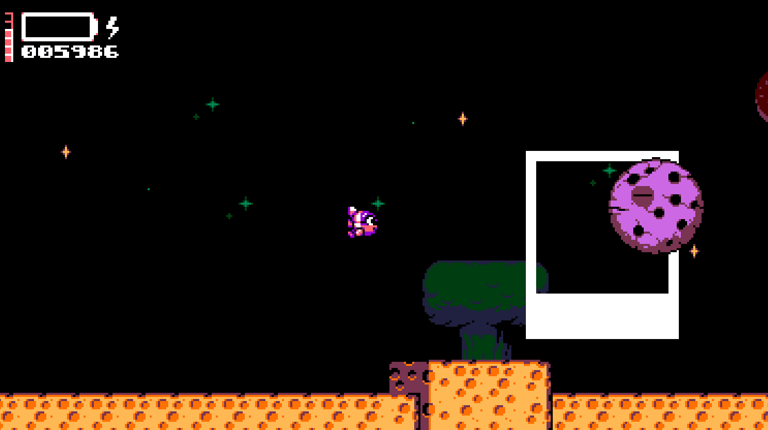

Caramel Caramel – One of the collection’s two shooters/shoot ‘em ups, this one takes the “cuter shooter” approach while forgetting that, per the sub-genre’s purpose, cute ‘em ups are supposed to be more accessible than their more hardcore counterparts. Alas, this game is quite difficult, with even the first level proving surprisingly tricky to surmount without some harried practice. In fact, everything about Caramel Caramel seems designed to punish: players are given only one life at start, movement speed is slow, weapon power is feeble, attack variety low, and death brings a middle-finger reset back to the stage’s starting point. No continues, either. Even the core gimmick—a snapshot mechanic that allows foes to be photographed, and thus frozen, for extra points—isn’t particularly well-implemented or fun to use. Shooter nuts with more tolerance than this reviewer might find the game’s admittedly decent level designs worth the struggle and stress. But, with so many better alternatives already in existence (Harmful Park, Magical Chase, Parodius), there’s little reason to waste time on this one.
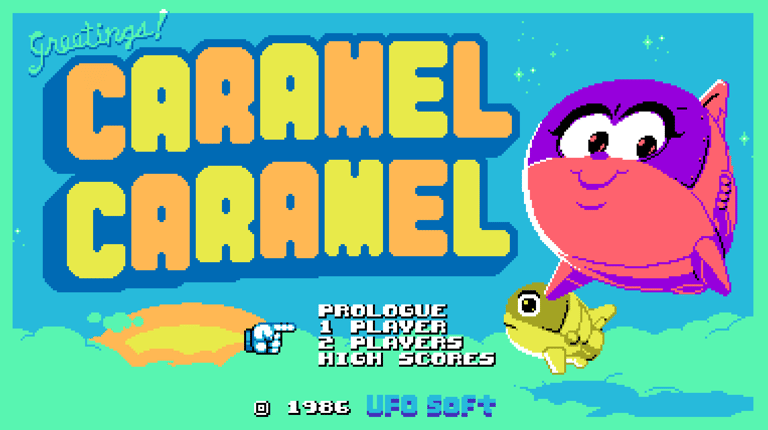

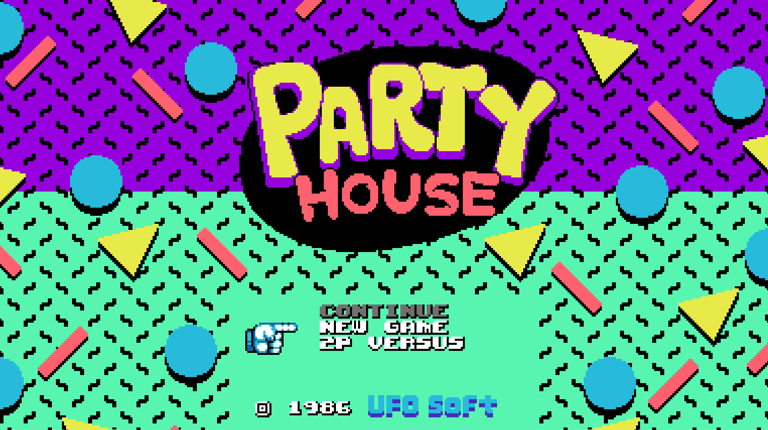

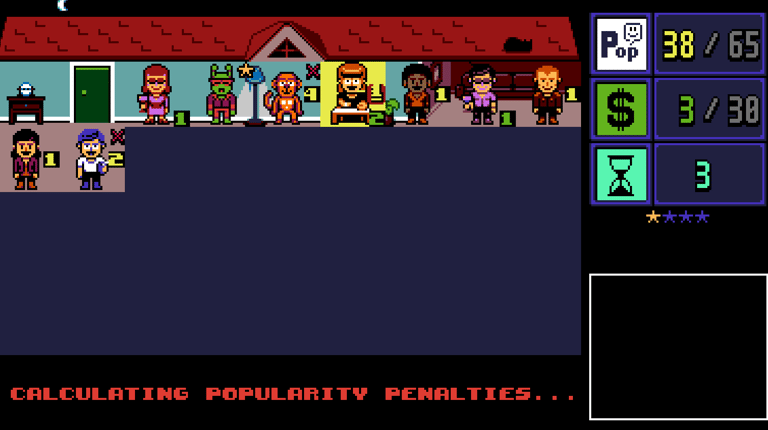

And that's the first 25! Click here for the second half!
Party House – Party House is all about building the ultimate party, except…rather than focusing on the planning and the catering, it’s all about the inviting—which guests might bring the most prestige? In other words, it’s all about building one’s popularity by drawing in personalities of ever-greater style and celebrity. Bringing in help—musicians, entertainers—is also important, for the dollars they earn can subsidize a bigger and happier home. Once the underlying rules are learned, the game proves to be a surprisingly addictive time waster that, unfortunately, never quite transcends its brutal randomization. In one scenario, for instance, players must earn enough popularity to invite five aliens. But with only 26 days (chances) to build a house and invite enough guests and earn enough money to, maybe, attract five E.T.s all attending a specific party on the same day…players will often fail. Not because they deserve to fail…but because the random “drops” of invitees rarely works in the player’s favor. In gambling, the House always wins in the end. But in gaming, either the player gets the advantage or he’s going to stop playing.
Contact: lostnostalgiaproductions@gmail.com
Website: www.lostnostalgia.com
Like what we're doing? Please consider throwing us a dollar into our Patreon page's tip jar!


